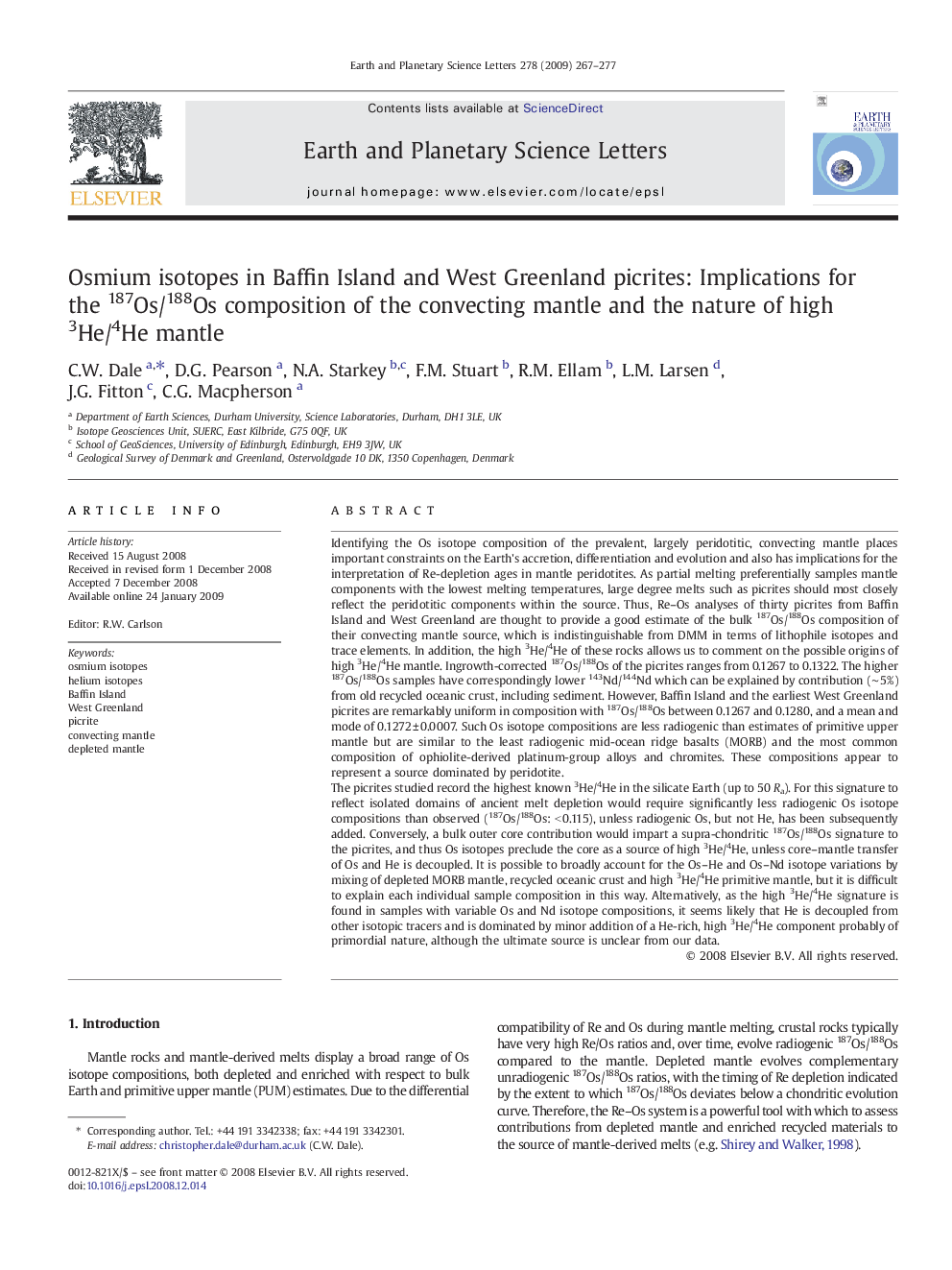| کد مقاله | کد نشریه | سال انتشار | مقاله انگلیسی | نسخه تمام متن |
|---|---|---|---|---|
| 4679327 | 1634879 | 2009 | 11 صفحه PDF | دانلود رایگان |

Identifying the Os isotope composition of the prevalent, largely peridotitic, convecting mantle places important constraints on the Earth's accretion, differentiation and evolution and also has implications for the interpretation of Re-depletion ages in mantle peridotites. As partial melting preferentially samples mantle components with the lowest melting temperatures, large degree melts such as picrites should most closely reflect the peridotitic components within the source. Thus, Re–Os analyses of thirty picrites from Baffin Island and West Greenland are thought to provide a good estimate of the bulk 187Os/188Os composition of their convecting mantle source, which is indistinguishable from DMM in terms of lithophile isotopes and trace elements. In addition, the high 3He/4He of these rocks allows us to comment on the possible origins of high 3He/4He mantle. Ingrowth-corrected 187Os/188Os of the picrites ranges from 0.1267 to 0.1322. The higher 187Os/188Os samples have correspondingly lower 143Nd/144Nd which can be explained by contribution (∼ 5%) from old recycled oceanic crust, including sediment. However, Baffin Island and the earliest West Greenland picrites are remarkably uniform in composition with 187Os/188Os between 0.1267 and 0.1280, and a mean and mode of 0.1272 ± 0.0007. Such Os isotope compositions are less radiogenic than estimates of primitive upper mantle but are similar to the least radiogenic mid-ocean ridge basalts (MORB) and the most common composition of ophiolite-derived platinum-group alloys and chromites. These compositions appear to represent a source dominated by peridotite.The picrites studied record the highest known 3He/4He in the silicate Earth (up to 50 Ra). For this signature to reflect isolated domains of ancient melt depletion would require significantly less radiogenic Os isotope compositions than observed (187Os/188Os: < 0.115), unless radiogenic Os, but not He, has been subsequently added. Conversely, a bulk outer core contribution would impart a supra-chondritic 187Os/188Os signature to the picrites, and thus Os isotopes preclude the core as a source of high 3He/4He, unless core–mantle transfer of Os and He is decoupled. It is possible to broadly account for the Os–He and Os–Nd isotope variations by mixing of depleted MORB mantle, recycled oceanic crust and high 3He/4He primitive mantle, but it is difficult to explain each individual sample composition in this way. Alternatively, as the high 3He/4He signature is found in samples with variable Os and Nd isotope compositions, it seems likely that He is decoupled from other isotopic tracers and is dominated by minor addition of a He-rich, high 3He/4He component probably of primordial nature, although the ultimate source is unclear from our data.
Journal: Earth and Planetary Science Letters - Volume 278, Issues 3–4, 25 February 2009, Pages 267–277